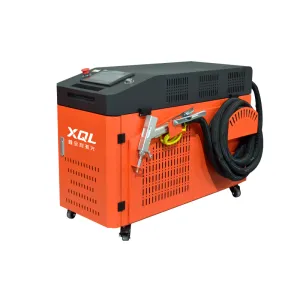Over the years, bending machines have undergone three major changes: how the machine is driven, how it is automated, and how parts flow through the machine. The challenge for most manufacturers is to understand these shifts and how to apply them to their situation. However, if applied properly, they will work together to eliminate bending bottlenecks.

XQL-SA130 Letter Bending Machine
1. Drive Systems
In the first half of the 20th century, most press brakes had a motor, flywheel, eccentric crank and brake (hence the name bender). The flywheel stores a large amount of kinetic energy and the clutch engages the bending cycle. The eccentric crank converts the rotational motion of the flywheel into a linear squeezing motion of the plunger. The brake stops the bending cycle.
These first generation hydraulic press drives were not as dynamic as the proven mechanical press drives. To compensate for this "sponteness", bending machine manufacturers simply reduced press speeds.
Only recently, when demand shifted again from JIT manufacturing to mass customization, did these flexible press drives dominate the sheet metal industry. This renewed need for speed has prompted bending machine manufacturers to re-evaluate the master press drive once again.
A popular alternative to screw drives is a pulley system in which belts are threaded through, like pulley pulleys used to lift heavy loads. This drive distributes the load to the individual components.
Another upcoming drive type is the hybrid hydraulic electric bending machine. As the name implies, these benders use both hydraulic and electric systems. The hydraulics drive the bender gate, but the direction of the AC servo motor determines the direction of the gate movement. The hydraulic fluid does not move all the time like a conventional hydraulic system, so some efficiency is gained.
2. Automation
In the sheet metal industry, the dramatic change in technology has been accompanied by a new way of thinking about productivity. This involves Industry 4.0, or the fourth industrial revolution.
The first industrial revolution was accompanied by water and steam power; the second by mass production with the help of electricity; and the third by the use of electronics and information technology.
Industry 4.0 has had a profound impact on the bending machine sector. Operators no longer need to spend time programming, testing bends, checking and adjusting. Technicians create and simulate bending programs offline. Machines measure and correct for angular errors. All of this allows more small batch jobs to flow through the bending machine in less time.
Modern bending machines have a huge storage capacity for part programs, so all programs can be saved; an artificial intelligence database to correct new programs; and an automatic stabilization system to compensate for material changes. A new brake can be set with a swipe of a finger on the screen - except for tools. In many cases, tool changes exceed 80% of the total setup time.
The automatic bending tool changer captures this opportunity.
Robotic bending machines are often dedicated to a small group of parts, and they often reduce the number of part configurations you can have. On the other hand, tool change automation does not affect the basic machine design or the number of part configurations the bender can bend.
3. Processes
Most manufacturers organize their stores in process-based departments. But almost all parts are cut with a punch or laser, and most parts bend - so why not create a unit on the laser? Operators can pull blanks from nests, bend them, and then put them into shipping boxes for final processing.
Unfortunately, the part process is usually not that simple. Each part is not processed in the same way. Bringing the bending machine too close to the laser can actually hinder the production of large parts. The cost of temporarily moving the bender for a job will exceed the cost of moving the part. So once again, keeping the bender in its own department was considered a cost of doing business - and until recently, it was.
Today, no special foundation is required to install these smaller machines. In addition, given the intuitive nature of modern bending machine controls, training is not difficult.
Recently, small portable bending machines - many with all-electric or hybrid hydraulic motors - have become increasingly popular, not only because of the forming speeds they offer, but also because of their flexibility. Their low center of gravity makes them portable, and the integrated forklift slots further reduce the risk of tip-over.
Now you can move your bending machine production to where you need it and back when you need it. Some machines can go from production run in one location to production run in another in less than 5 minutes. Contact a professional manufacturer for more information, feel free to consult us. We also have fiber laser cutting machines for sale.












